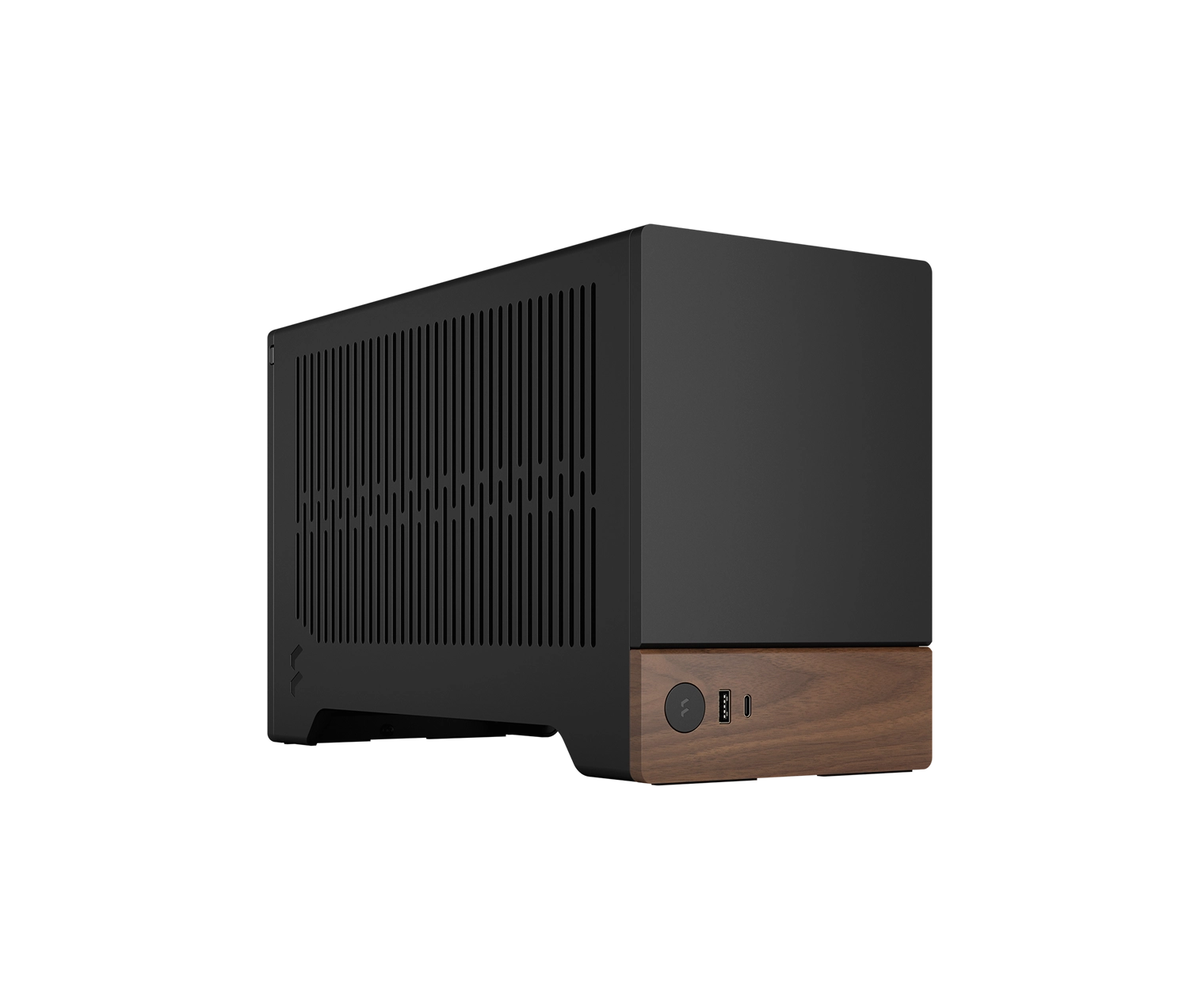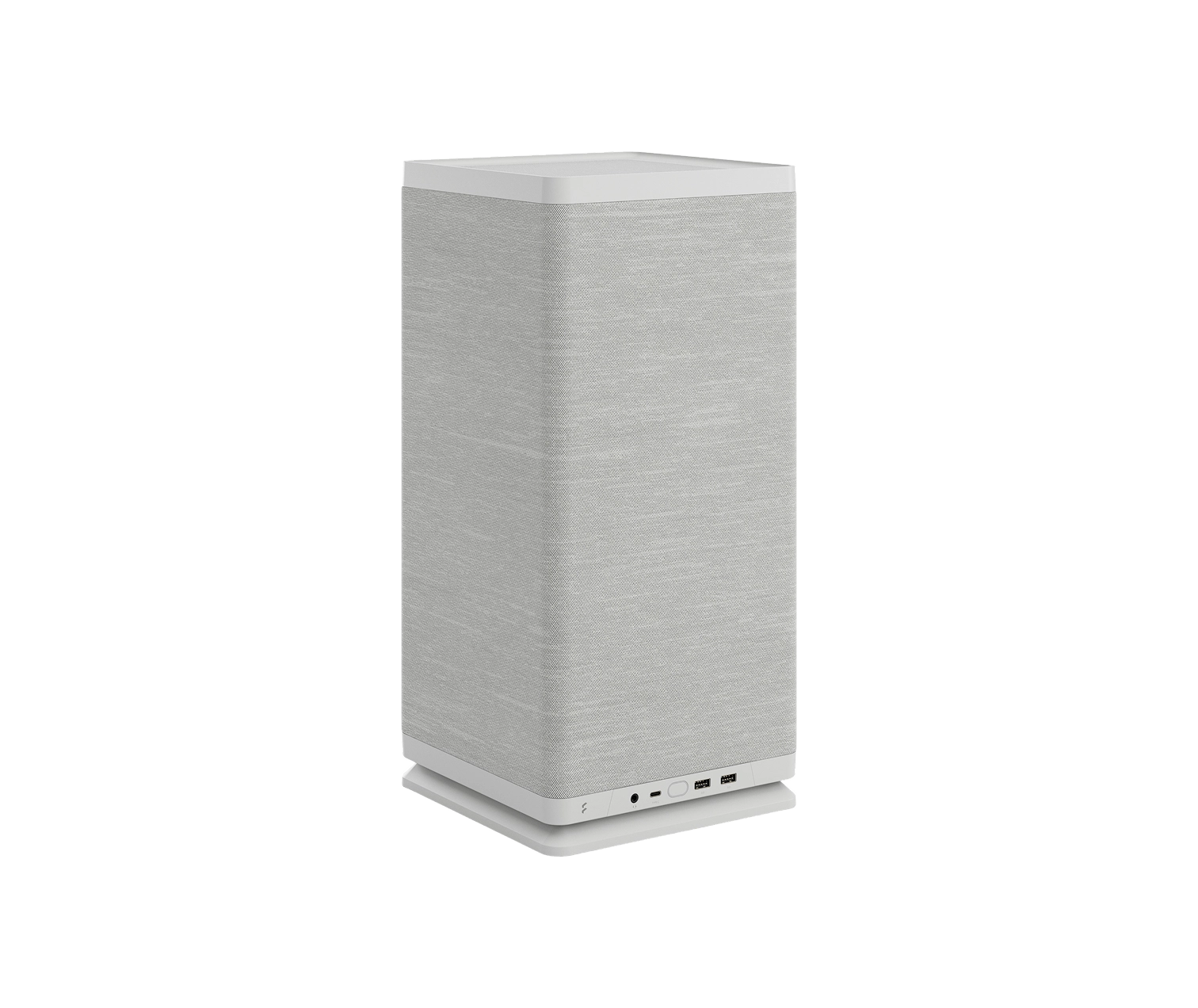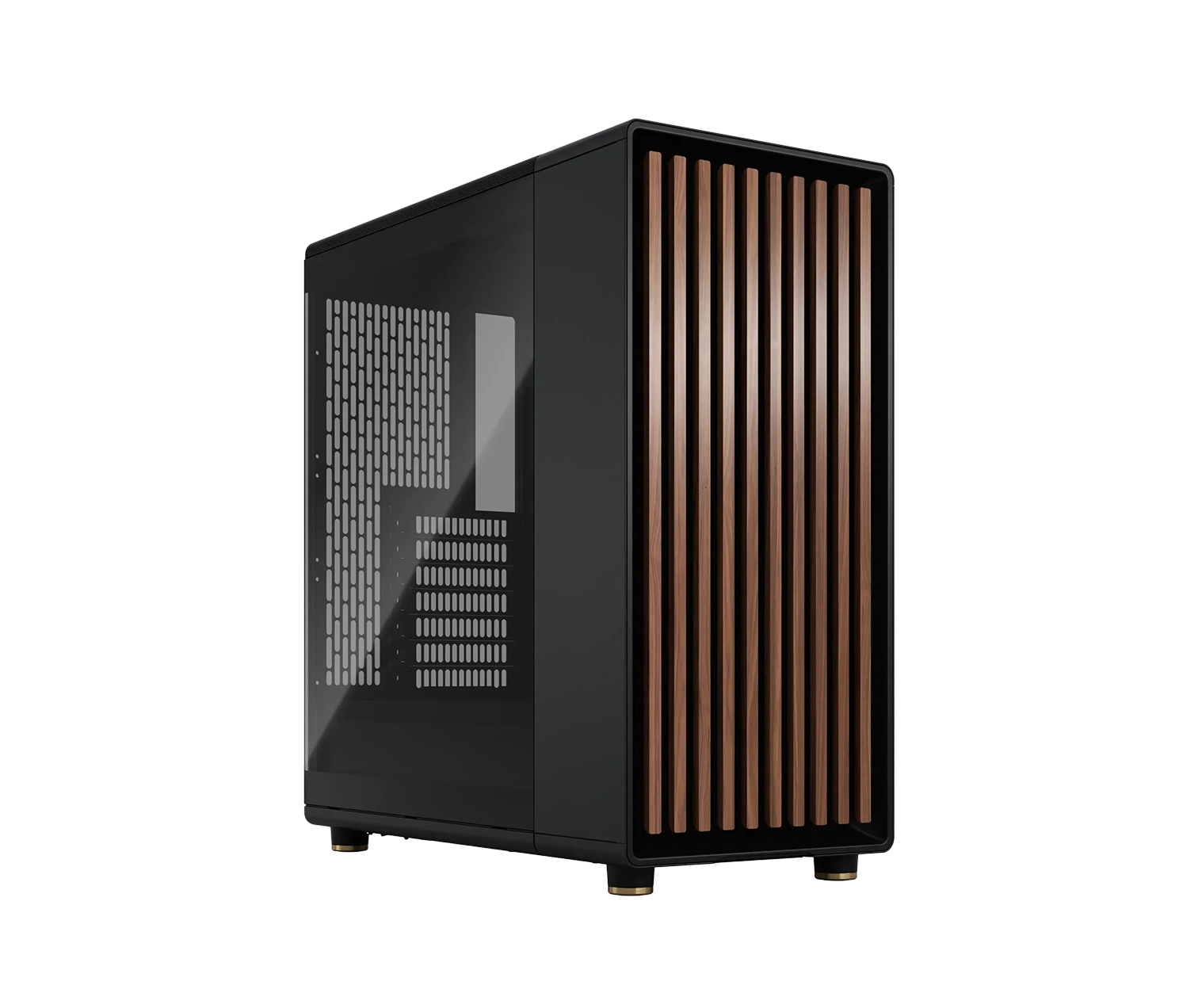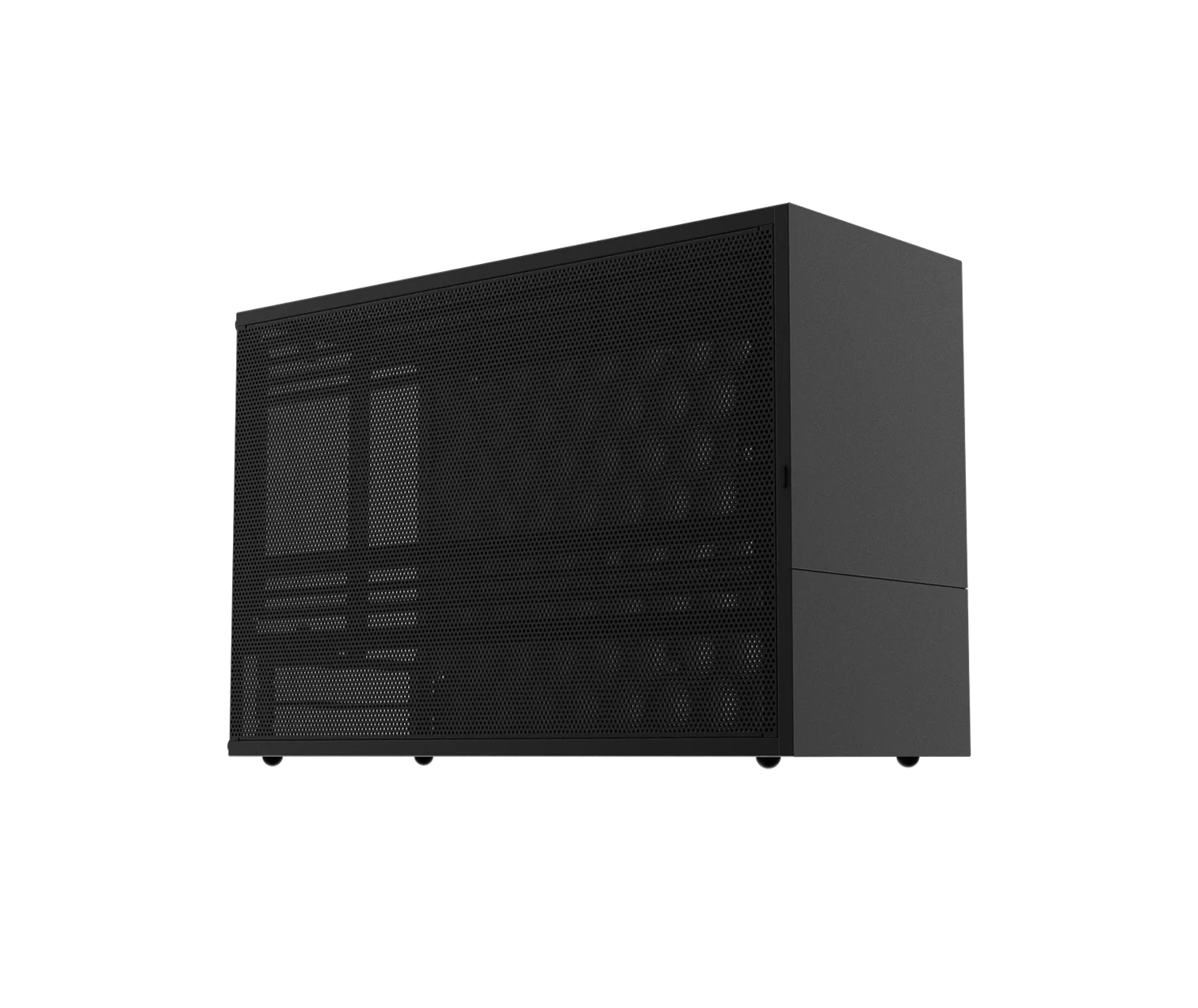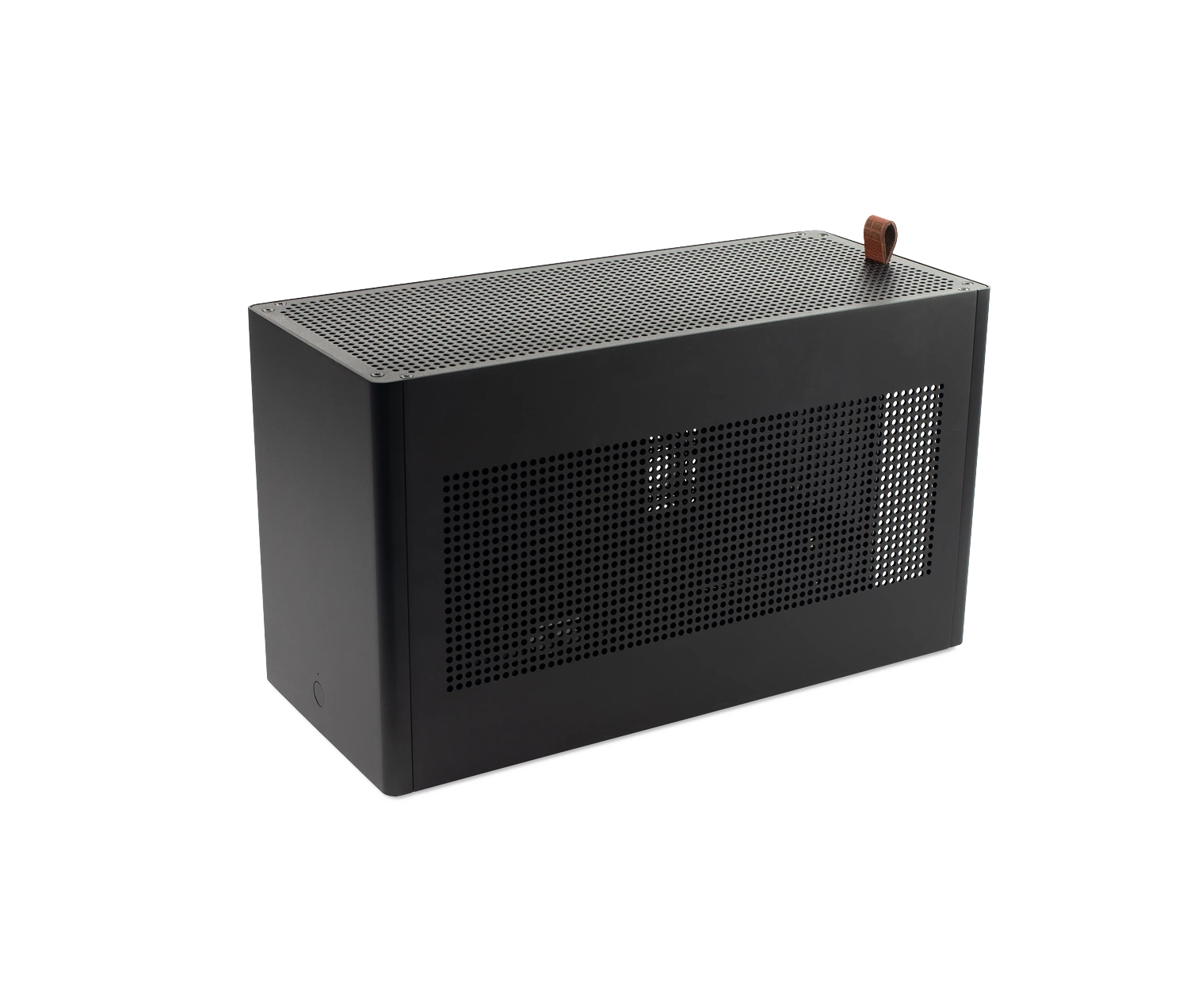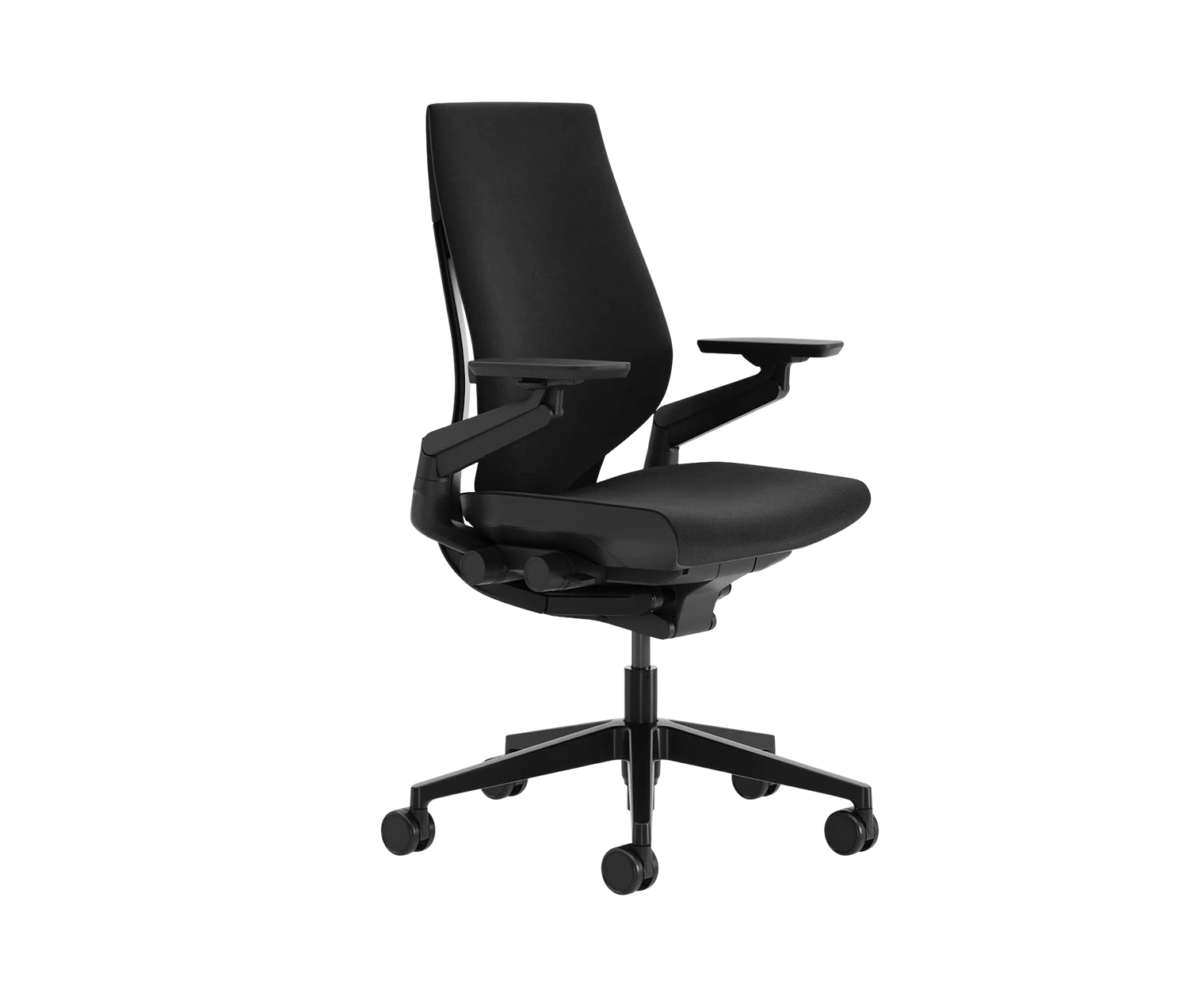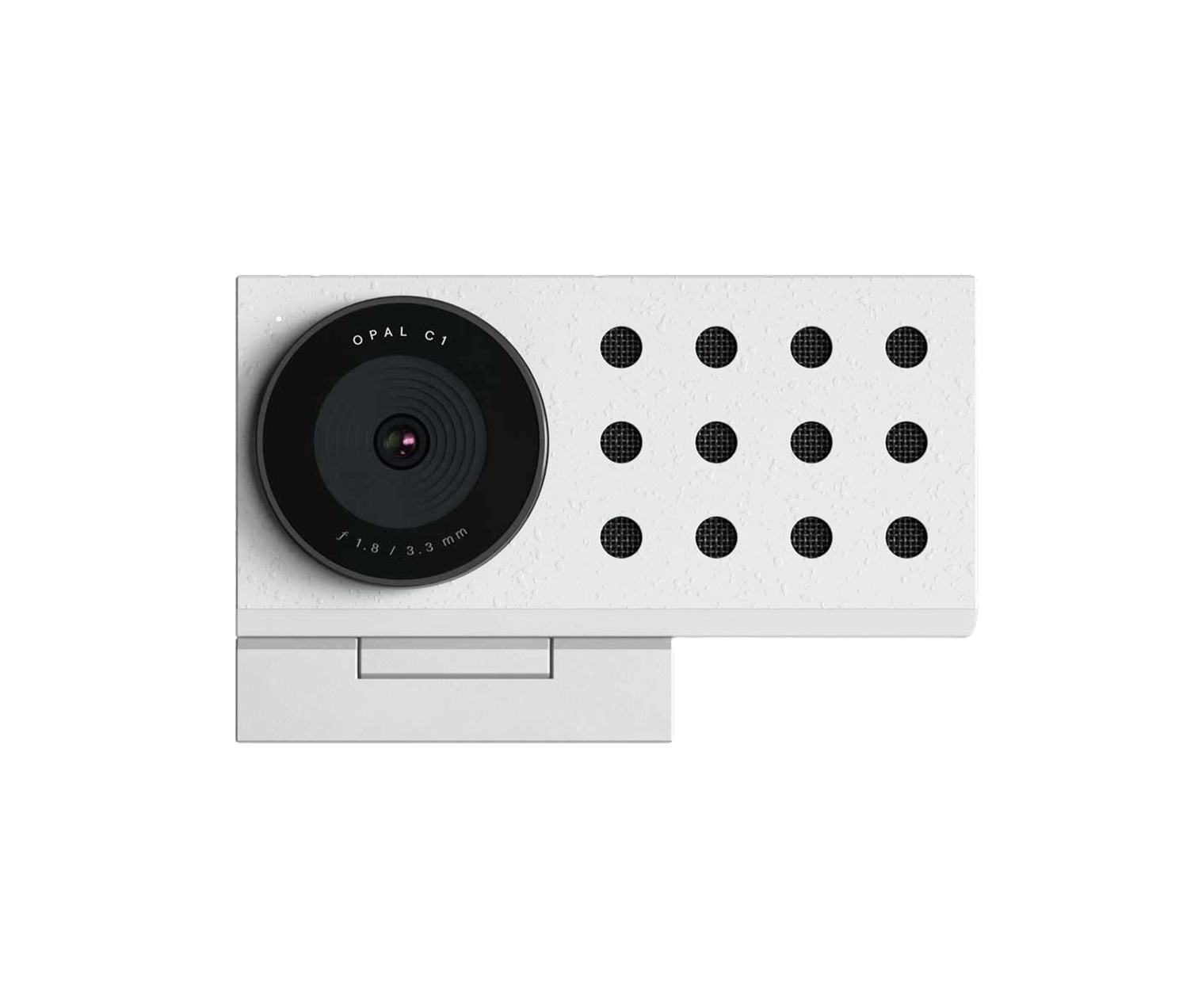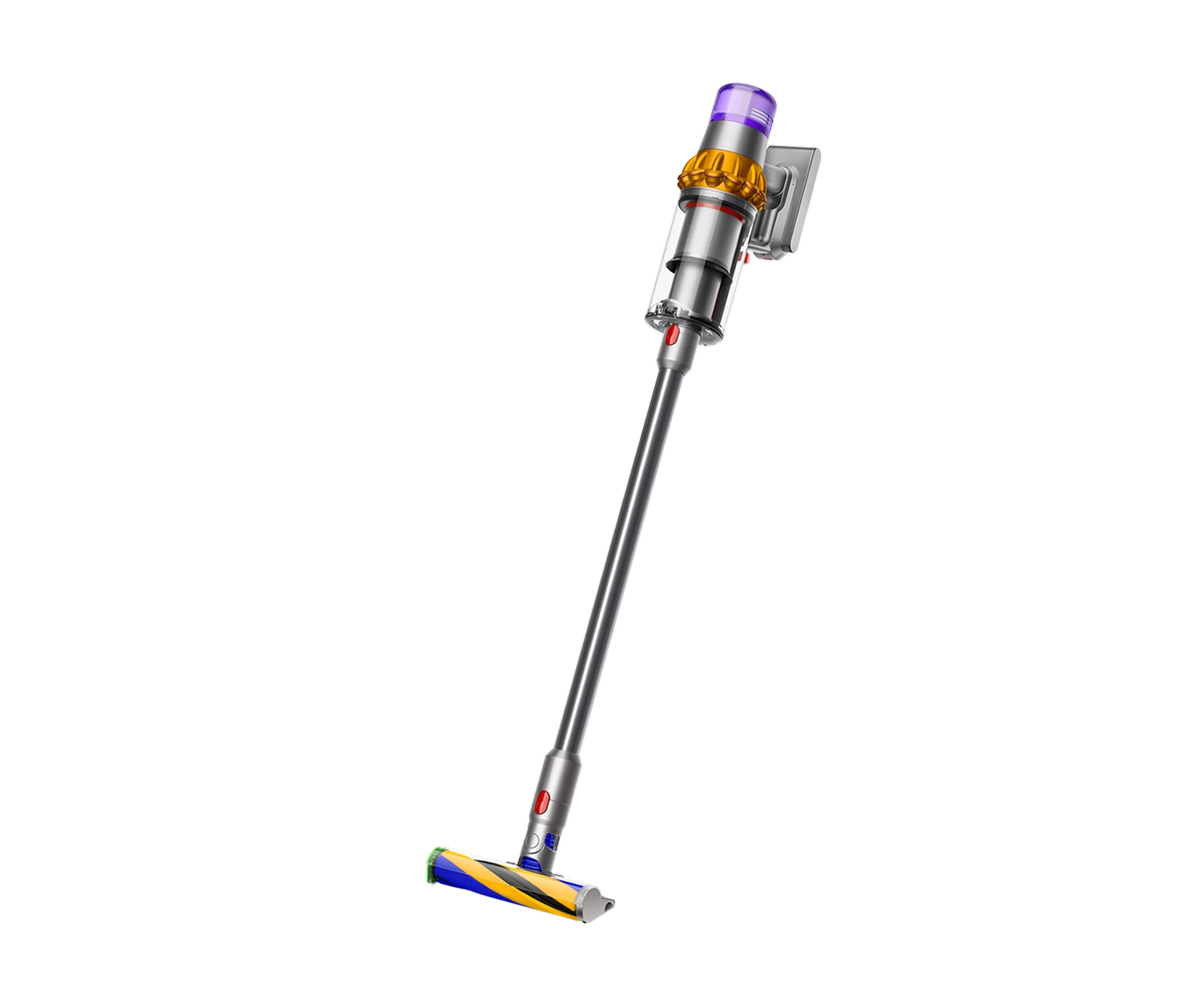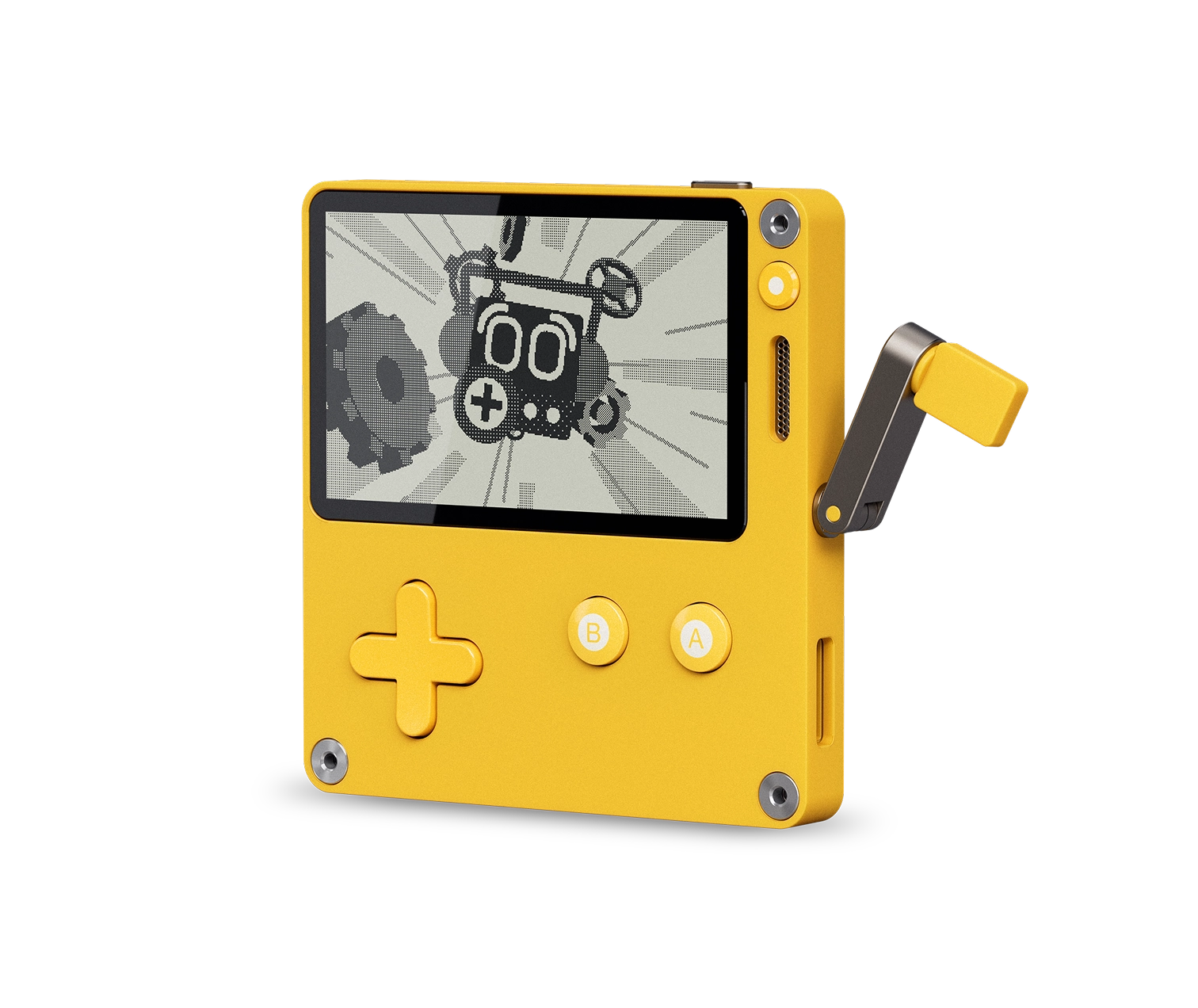Oct 18, 2025
·
·
The gaming PC grew up somewhere between the rise of remote work and the realization that a desktop does not need to resemble a nightclub. RGB lighting has its place. That place is not on a desk shared with client calls and focused work. The best minimalist PC cases prove performance and restraint can coexist without compromise.
A clean PC build begins with the enclosure. The case sets the tone for everything inside it. Cable routing, airflow strategy, component selection: all follow from that first decision.
For those seeking desktop aesthetic that favors longevity over trends, certain manufacturers understand the assignment. Fractal Design leads this conversation, but others contribute meaningfully. What follows are PC cases that respect the space they occupy.
When Wood Meets Mesh: Fractal North
The Fractal North asks a question most PC cases ignore: what if the tower looked intentional from across the room? Its defining feature is a removable front panel crafted from walnut or oak veneer, depending on preference. The wood grain is real, not printed. Beneath this sits a full mesh front for unrestricted airflow, a reminder that thermal performance need not be sacrificed for visual coherence.
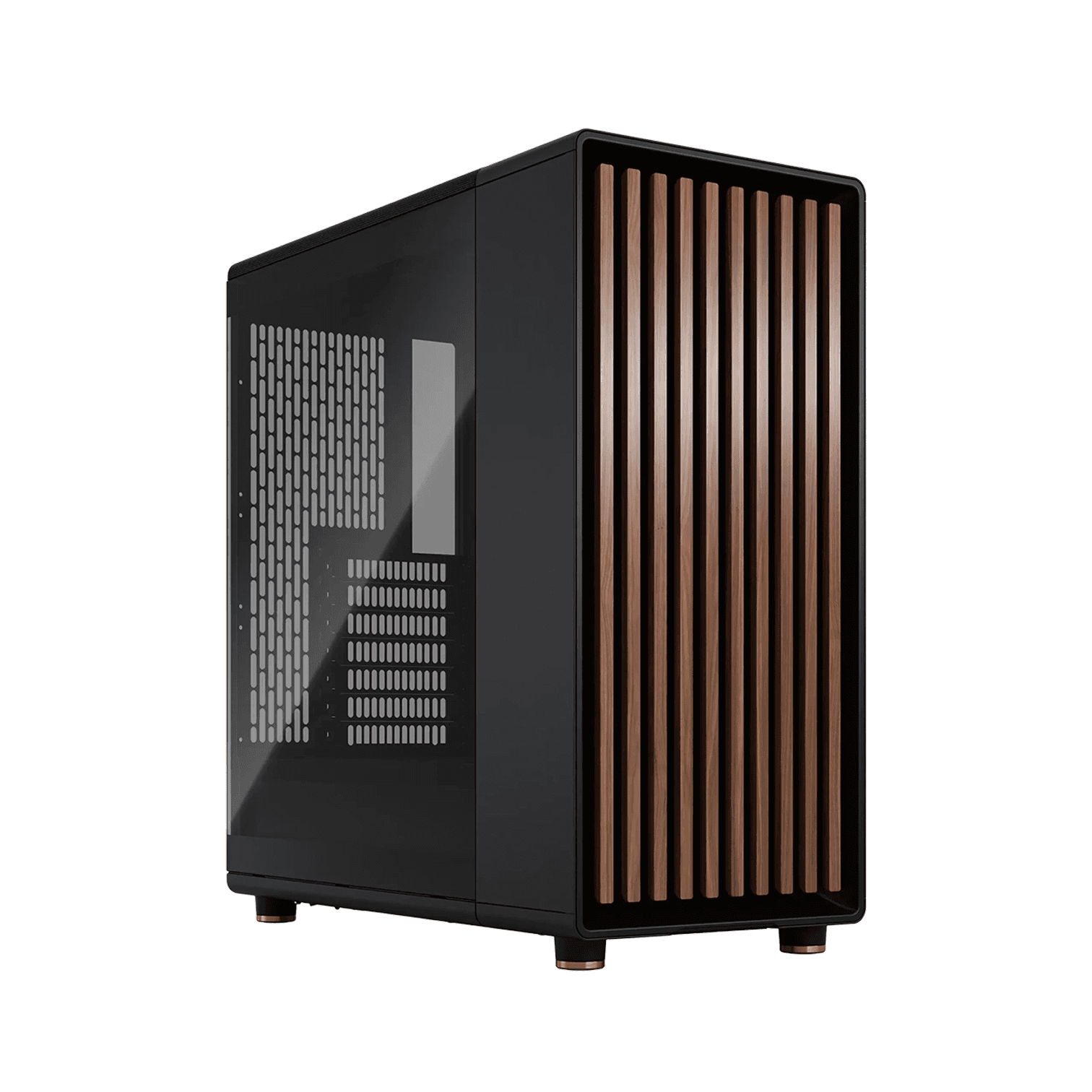
Inside, the North accommodates ATX motherboards and GPUs up to 355mm in length. The vertical GPU mount option exists for those who prefer it, though the horizontal layout works equally well. Cable management routing is thoughtful without being prescriptive. This is a PC case without RGB lighting that instead relies on material honesty. The wood darkens over years of exposure to light and air, creating patina rather than obsolescence. For builders seeking a premium computer case that doubles as furniture, the North delivers without theatrics.
Ultra-Compact Intent: Fractal Terra
Small form factor PC cases often feel like compromises. The Fractal Terra refuses this logic. Designed for Mini-ITX builds, it measures just 10.46 liters in volume yet supports full-size GPUs up to 320mm and CPU coolers up to 160mm tall. The case employs a sandwich layout with the motherboard and GPU mounted vertically, separated by a riser cable. This configuration maximizes internal space while keeping the external footprint minimal.
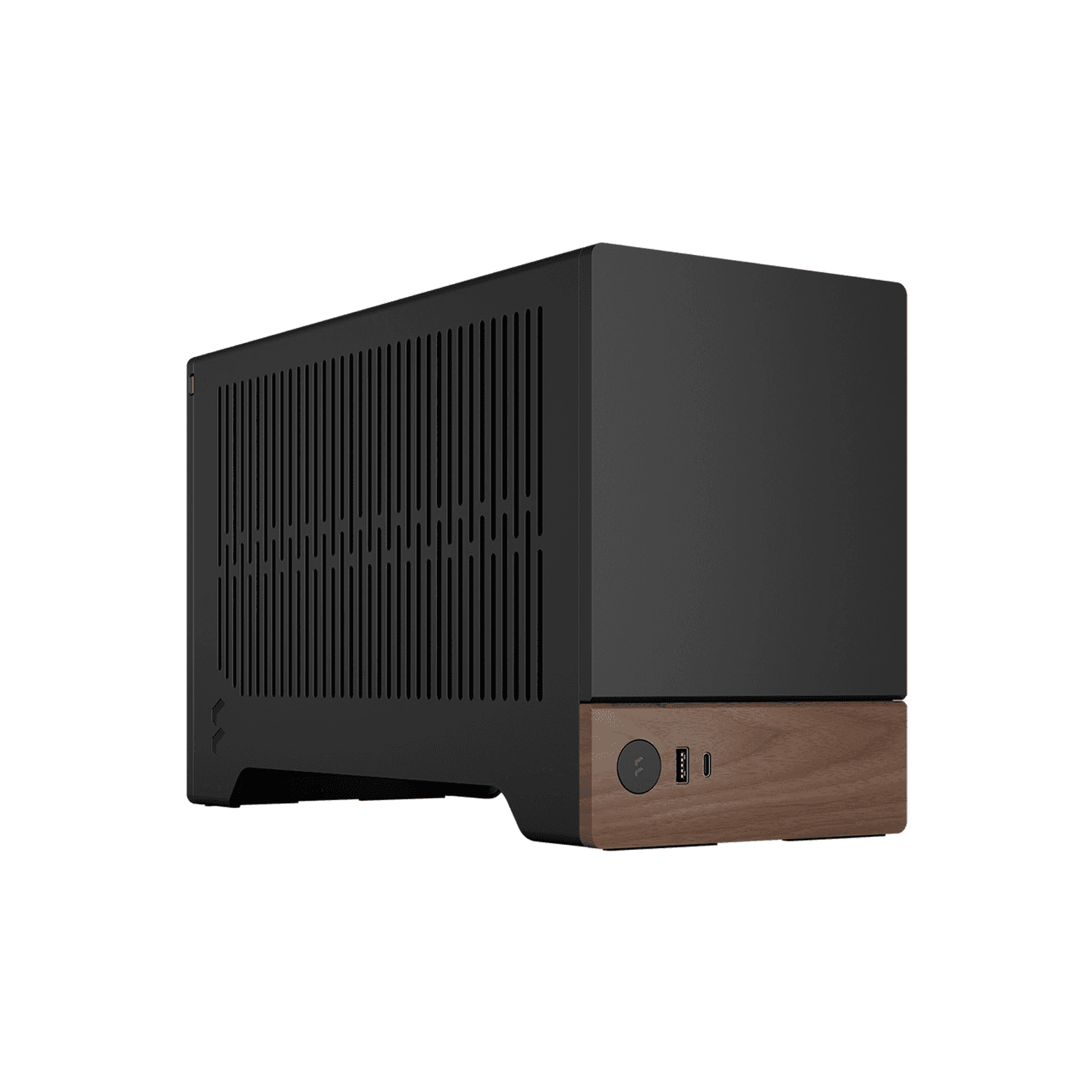
The Terra's mesh panels wrap three sides, ensuring airflow remains strong despite the compact dimensions. Dust filters are magnetic and removable without tools, a detail that matters during maintenance. For those working from small desks or simply rejecting the notion that performance requires sprawl, this ITX case answers clearly. It sits quietly beneath a monitor or beside a keyboard, performing its function without demanding attention. This is quiet PC case design at the scale where every millimeter counts.
Industrial Minimalism: FormD T1
The FormD T1 represents the extreme end of small form factor thinking. At roughly 10 liters, it rivals the Terra in volume but takes a different structural approach. The T1 uses an aluminum sandwich design with dual-chamber architecture. The GPU occupies one side, the motherboard and cooling the other. This separation improves thermal management in tight quarters while maintaining clean visual lines.
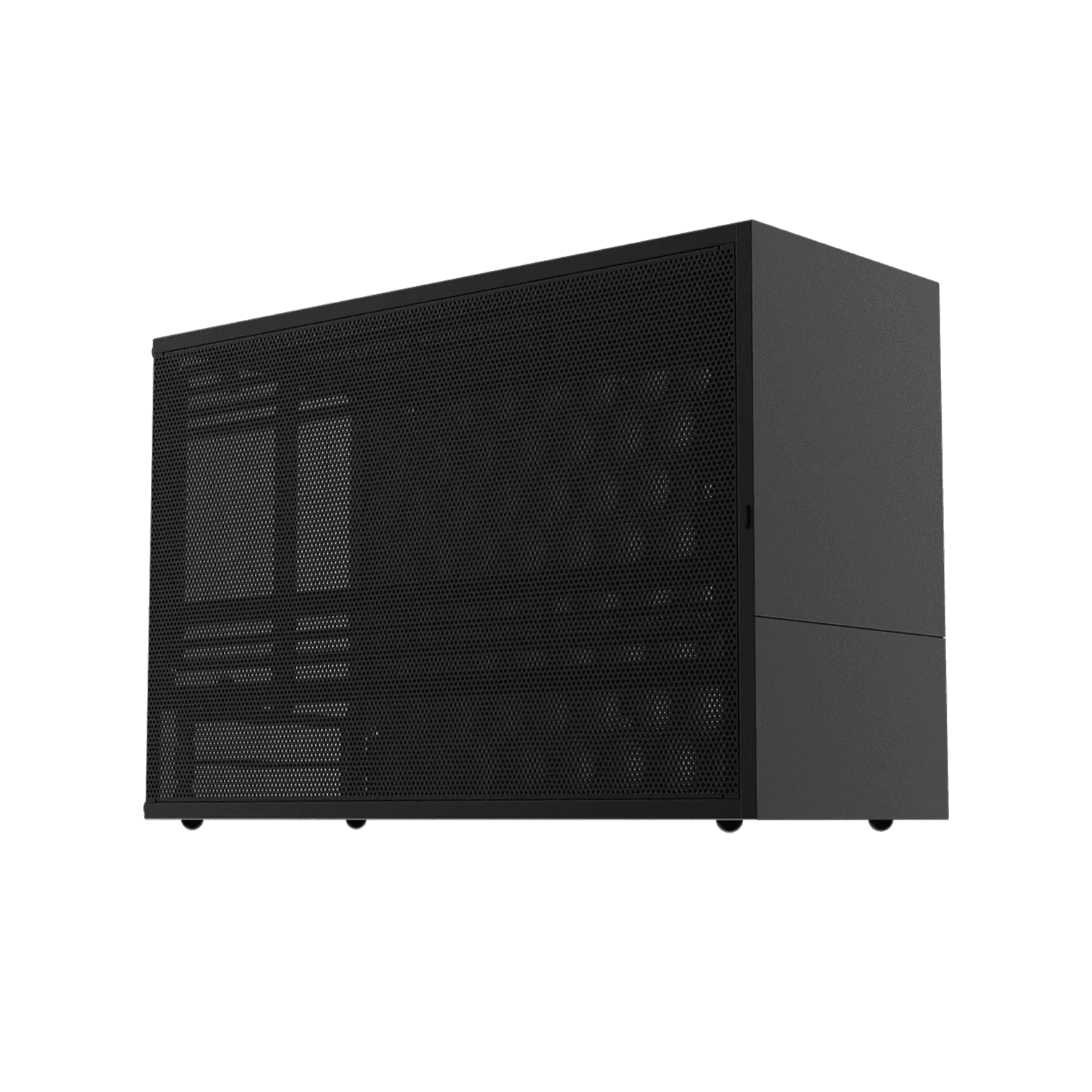
Building in the T1 requires precision. Cable management becomes critical when clearances measure in millimeters. The reward is a desktop that occupies less space than many external hard drives while housing full desktop components. The case ships in matte black or silver aluminum, both powder-coated for durability. There are no acrylic windows, no tempered glass side panels. Just six panels of aluminum held together with screws removed by hand. For builders who view constraints as creative fuel, the T1 provides plenty of both.
Understated Functionality: Fractal Mood
Not every build requires a window. The Fractal Mood acknowledges this with a fully opaque steel exterior. Its design language is utilitarian in the best sense: nothing included that does not serve function. The case supports Micro-ATX and Mini-ITX motherboards, positioning itself between the Terra's ultra-compact form and the North's full ATX scale.
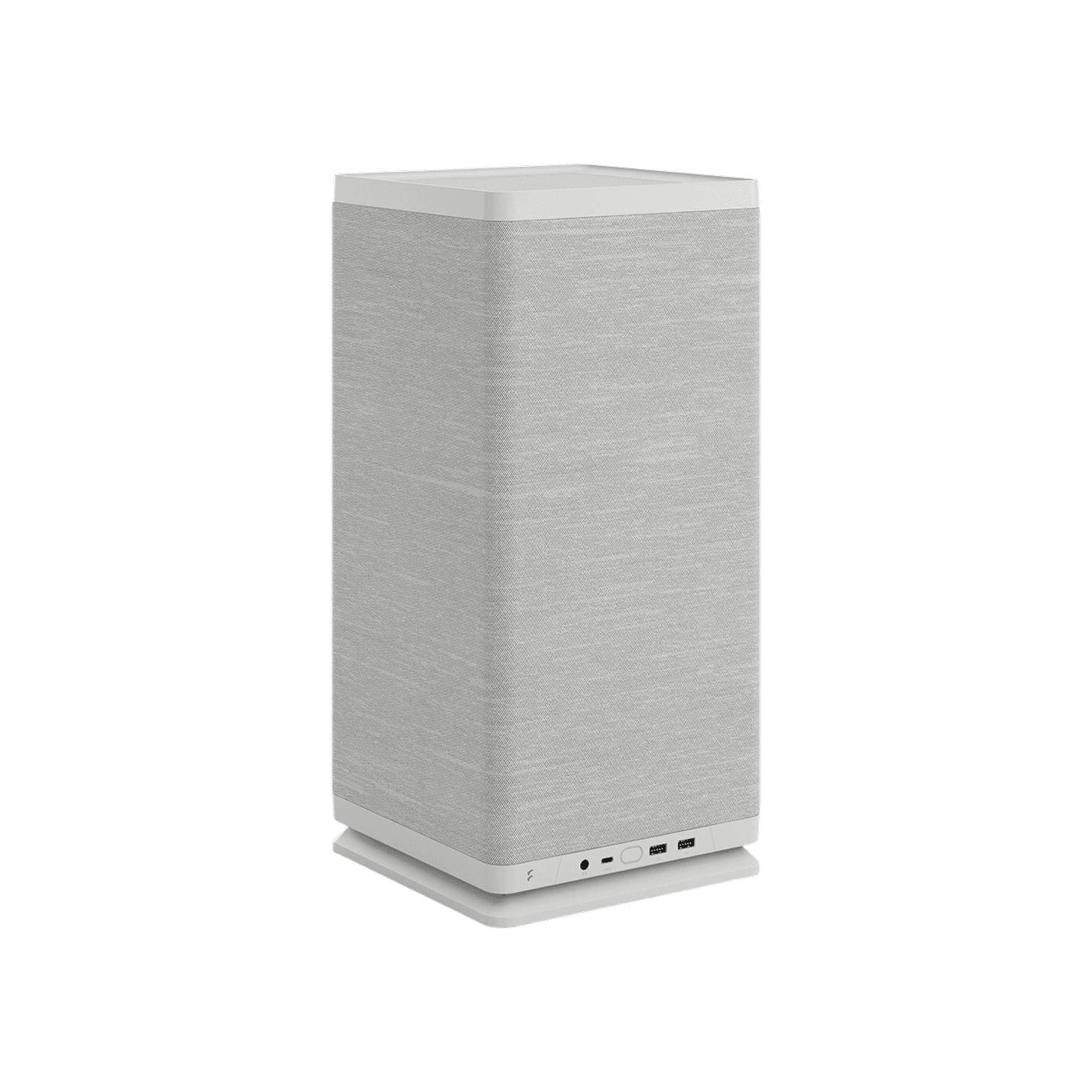
Front I/O includes USB-C, a feature still absent from too many cases at this price point. The top panel remains flat and uninterrupted, ideal for placing objects without worry. Dust filters cover all intake points, and cable routing channels run vertically behind the motherboard tray. The Mood does not attempt to be conversation-starting. It simply houses components efficiently while occupying minimal visual bandwidth. For home office setups where the PC should recede rather than announce itself, this black PC case executes the brief perfectly.
Horizontal Thinking: Louqe Ghost S1 MKII
The Louqe Ghost S1 MKII introduced many to the possibility of truly small ATX-class performance. Though discontinued in some markets, its influence persists. The modular top-hat system allowed builders to add height for additional cooling or storage as needed, creating a case that scaled with requirements rather than forcing universal compromise.
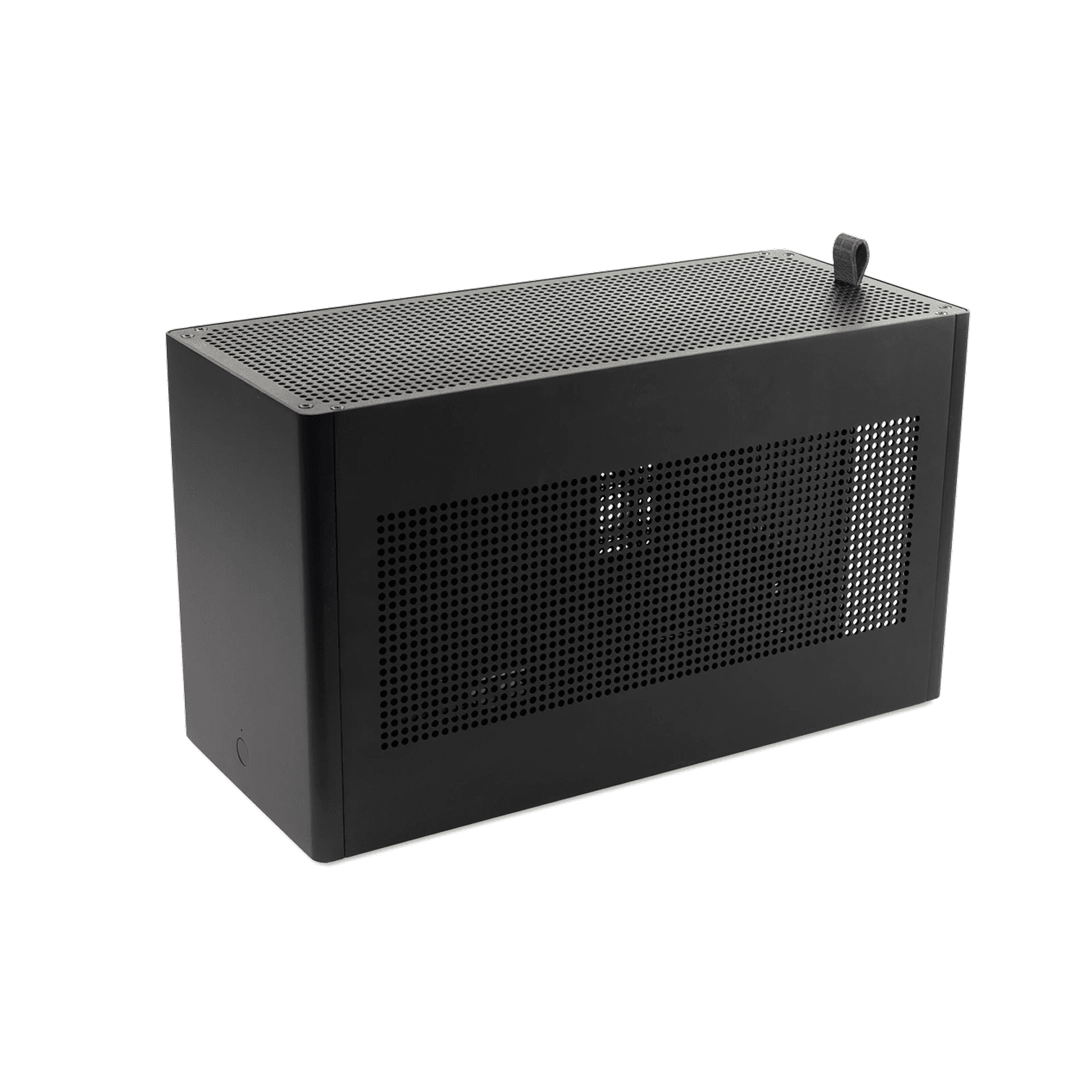
The MKII's all-aluminum construction and sandwich layout became templates others followed. Its legacy lives in cases like the FormD T1 and the broader acceptance that premium materials belong in PC building. Finding one now requires searching secondary markets, but for those committed to silent gaming PC aesthetics with maximum flexibility, the hunt often proves worthwhile.
Building for Longevity
The best PC case for a clean build shares certain traits regardless of size. Quality steel or aluminum construction outlasts plastic. Mesh panels provide better airflow than blocked fronts with RGB strips. Thoughtful cable management supports future upgrades without complete disassembly. Paint or powder coating should resist scratching during normal handling.
These minimalist gaming PC cases cost more than their LED-studded alternatives. The expense reflects material choice and manufacturing precision rather than marketing budget. Fractal PC cases in particular demonstrate this equation clearly: the North, Terra, Mood, and Ridge each prioritize fundamentals over flourish. FormD and Louqe approach from slightly different angles but arrive at similar conclusions about what matters.
A PC case that looks professional does not announce itself. It sits at desk height, cooling components without broadcasting that activity through pulsing lights. It accommodates standard parts without requiring exotic layouts. When opened for maintenance, the interior reveals logic rather than chaos. These qualities age well because they were never tied to a moment's trends.
The Long Build
Choosing a compact PC case for small desk setups or a full tower for maximum expandability both work within this framework. The scale changes but the principles hold. Buy once, build multiple times as components evolve. Let the case be the constant while GPUs, CPUs, and storage rotate through upgrade cycles.
The PC as furniture is not metaphor. It occupies physical and visual space. It generates heat and noise. It requires occasional access for cleaning and modification. The enclosure determines how all of this integrates into daily life. A well-chosen case fades into routine not through invisibility but through appropriateness. It does its work without demanding acknowledgment, which is perhaps the most RGB-free statement possible.
